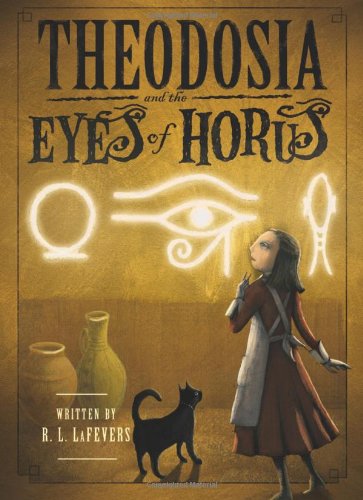Theodosia and the Eyes of Horus
According to Theodosia’s grandmother, an Edwardian girl of eleven should be learning to be a young lady under the tutelage of a respectable governess. This, however, is somewhat difficult if your parents are eccentric and distracted Egyptologists who run London’s Museum of Legends and Antiquities, and you happen to possess the ability to detect ancient Egyptian magic.
Theodosia Throckmorton is back in her third mystery, and this time her ongoing task of detecting and removing curses from artifacts is interrupted by her discovery of the Emerald Tablet among her parents’ latest finds. Legends about the tablet are varied and dubious, but one thing is certain: too many people interested in Egyptian magic, for good and bad, are determined to get their hands on it. Theodosia is catapulted into an adventure where the worlds of Edwardian London and Ancient Egypt meet, and learns along the way that even stuffy grandmamas are sometimes not what they seem.
R.L. LaFevers’s prose nicely evokes a tone of the period, the measured tempo providing a refreshing change to the mile-a-minute pace of so many other middle grade books. As both an English teacher and mother of (voracious) readers, I also appreciated the challenge that the subject matter, vocabulary and ongoing plotlines provide readers of this age. With the latter point in mind, I would add that while Theodosia fans will no doubt be happy with this new adventure, those unfamiliar with the series but intrigued by the premise might do best to begin with Theodosia and the Serpents of Chaos.
– Susan Cook
I really enjoyed reading Theodosia and the Eyes of Horus. Even though technically a children’s novel, it is a good read for people of any age group. Theodosia comes across as extremely intelligent and competent but still unmistakably a child, and having the book in first person makes it even better to read. The history is very accurate—I could completely imagine myself in Victorian London while I was reading it, and the plot is well-drawn-out. Even the magic seems believable and practical for the setting and time-period, and I would recommend the book to anyone over eight.
– Magdalen Dobson, Age 13










